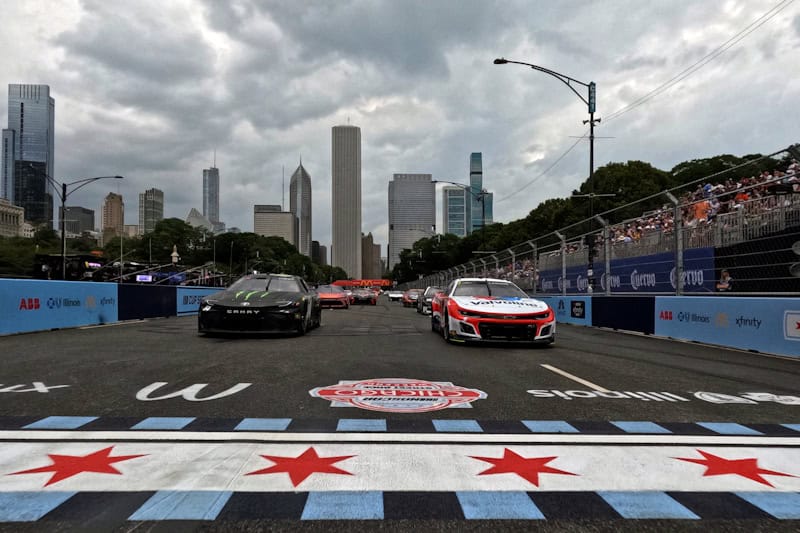NASCAR at a Crossroads: Should the Future of Street Racing Be in Chicago or San Diego?

As the NASCAR Cup Series roars through the streets of downtown Chicago this Fourth of July weekend, a major question hangs in the air, thick as tire smoke: What happens next? This weekend’s race marks the final event in a three-year contract between NASCAR and the Windy City, and with persistent rumors of a deal brewing in San Diego, the future of street course racing is at a pivotal crossroads.
The experiment in Chicago has been a resounding success, proving that stock cars can captivate a major urban market. But with only so much room on the schedule for these unique events, NASCAR faces a tough decision for 2026. Should it build on its success in a historic racing hub, or chase a golden opportunity in a market it desperately needs?
Here’s a look at the compelling arguments for both cities.
The Case for Chicago: History, Market Power, and Unfinished Business
The argument for keeping the race in Chicago is built on a foundation of history and momentum. The city is not just another stop on the tour; it’s the birthplace of American auto racing, hosting the nation’s first-ever race in 1895. The Midwest is a racing heartland, and Chicago is its undisputed epicenter.
From a business perspective, the logic is undeniable. The Chicago race has been a massive draw for major sponsors like McDonald’s and WeatherTech, offering unparalleled exposure in what was, until recently, NASCAR’s largest market. To build a fanbase over three years only to leave with no concrete plan to retain them would feel like a wasted effort.
Furthermore, the most obvious alternative—the fantastic 1.5-mile Chicagoland Speedway—is currently in no condition to host a race. Recent photos show the track in disrepair, with grass growing through cracks in the asphalt. While it could be a welcome return to the schedule, it’s not a viable option for 2026, making a continued street race the only way to keep a presence in the immediate Chicago area.
The Case for San Diego: Filling a Massive Hole in Southern California
While Chicago’s success is undeniable, the argument for moving to San Diego is one of strategic necessity. NASCAR is currently invisible in Southern California, the nation’s second-largest media market—a void that is simply too big to ignore.
Consider the recent losses:
-
Auto Club Speedway was shuttered, with plans for a new short track at a standstill.
-
The Clash at the L.A. Coliseum lost its novelty and has returned to the Southeast.
-
Historic tracks like Ontario and Riverside are long gone, victims of rising property values.
-
A reported attempt to buy into the Long Beach Grand Prix fell through.
With all other options exhausted, San Diego represents NASCAR’s last, best chance to reestablish a foothold in a critical market. A scenic downtown waterfront offers a picturesque backdrop for a temporary street circuit, a proven concept thanks to Chicago.
Finally, there’s the novelty argument. To keep street races special, rotating them between cities could be the smartest long-term play. It prevents the events from becoming stale and generates fresh excitement in new markets. While Chicago has a viable (though delayed) alternative in Chicagoland Speedway, Southern California has none. For NASCAR, the need to return to SoCal is not just an opportunity—it’s an emergency.
As the engines cool in Grant Park this weekend, the decision-makers at NASCAR will have to weigh a proven winner against a critical need. Whether they choose to stay the course in Chicago or head west to San Diego, their decision will shape the look and feel of the sport for years to come.





